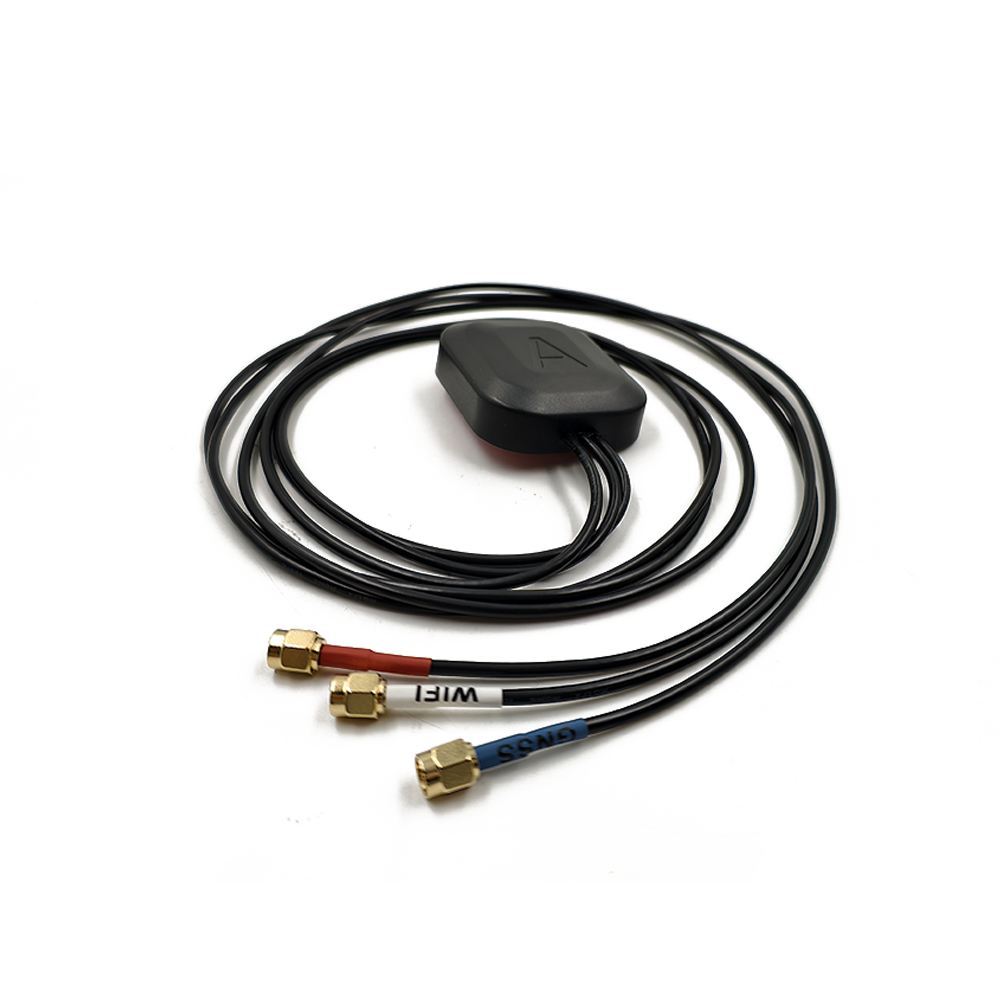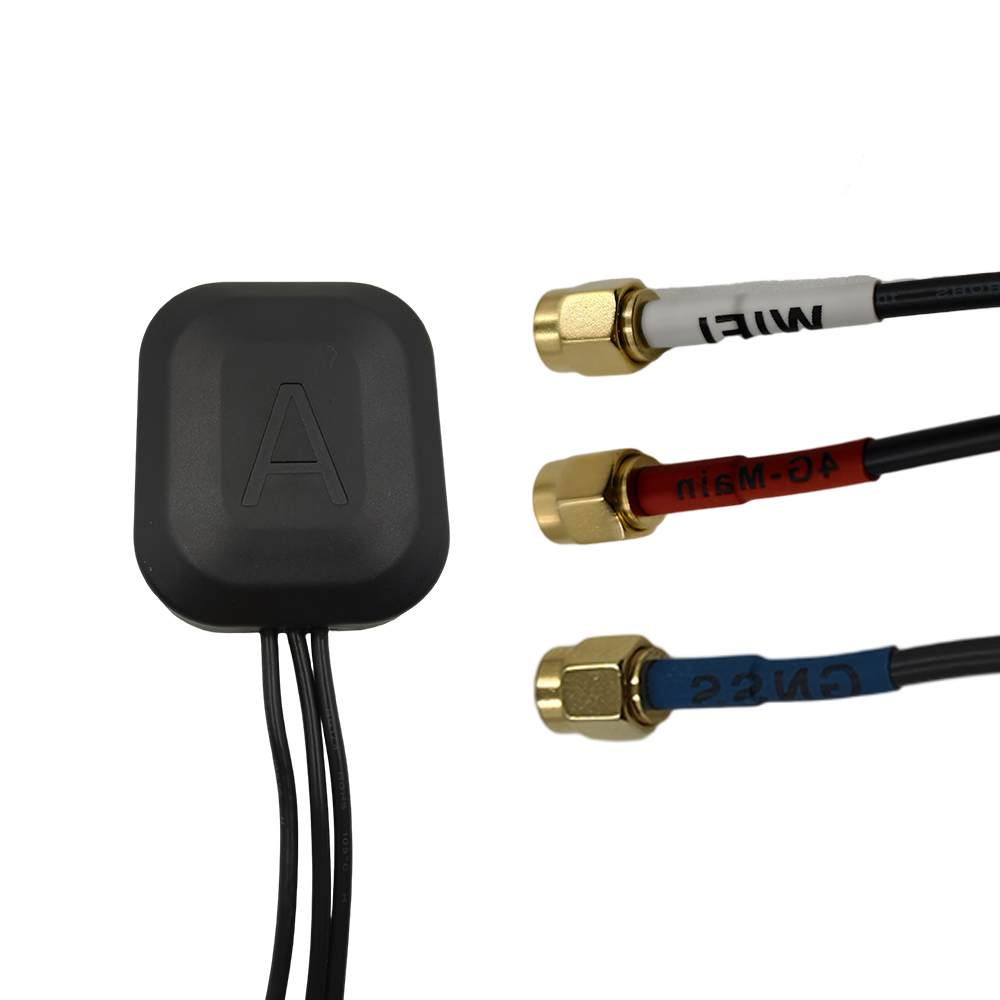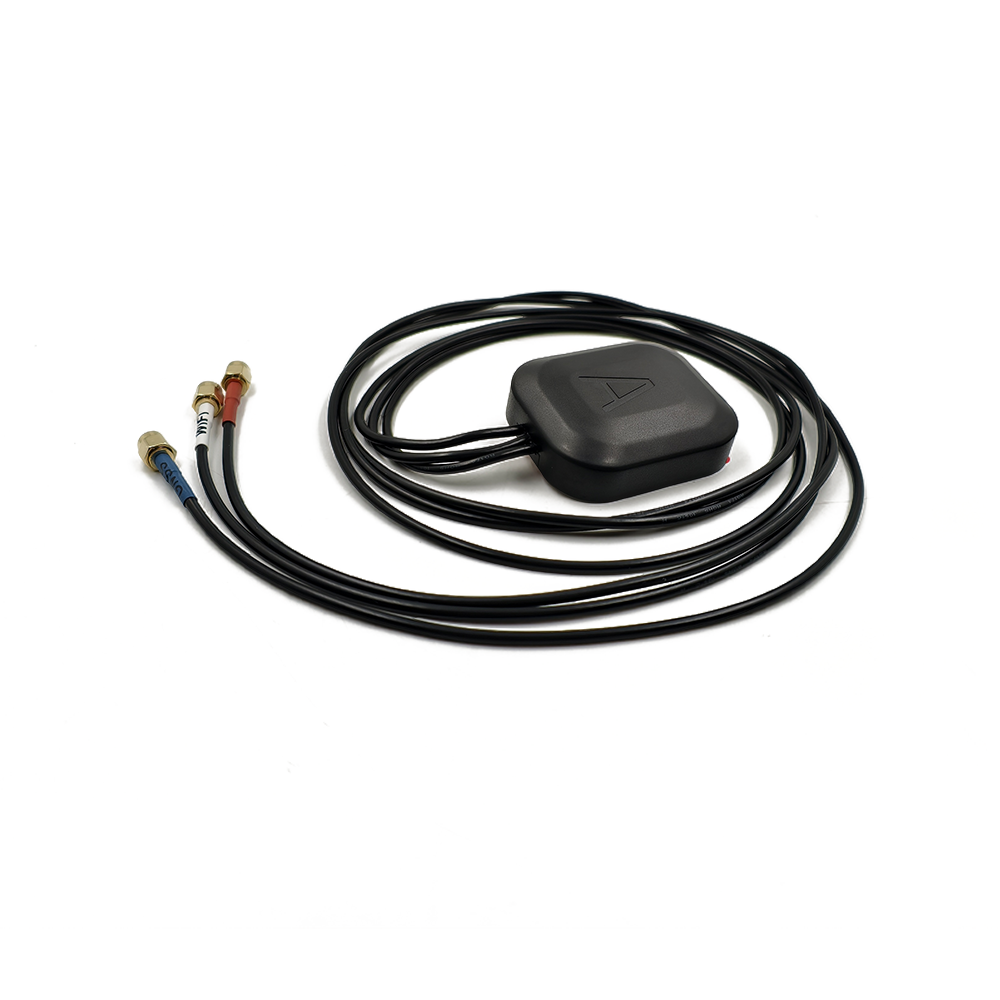The L1/L2/L5 multi-band RTK ceramic antenna is a transformative technology that is unlocking new possibilities and elevating performance across a wide spectrum of high-precision industries. Its unique capabilities are being leveraged in applications where its advantages directly translate into tangible benefits in efficiency, safety, and capability. Furthermore, its development is driving and being driven by several key future trends in the world of positioning.
Applications
Precision Agriculture and Autonomous Farming: This is one of the largest and most demanding applications. For automated tractors, sprayers, and harvesters, a quick and reliable RTK fix is paramount.
Fast Initialization: A tractor entering a field can achieve a centimeter-accurate fix in seconds, maximizing productive time.
Uninterrupted Operation: The resilience to ionospheric disturbances and multipath ensures the auto-guidance system does not disengage on long passes or under challenging conditions, preventing skipped rows or overlapping applications which waste inputs and reduce yield.
Support for Advanced Practices: It enables high-speed, high-precision applications like variable rate seeding and fertilizing, where the implement is moving quickly and cannot afford any positioning uncertainty.
Professional Surveying, Mapping, and GIS: Surveyors and mapping professionals require the utmost reliability and accuracy.
Productivity in Difficult Environments: The ability to maintain a fix under tree canopy, near buildings, or in urban canyons is greatly enhanced by the redundant L5 signals, reducing the number of required re-initializations.
Long Baseline RTK: The improved ionospheric modeling makes network RTK and single-base RTK more reliable over longer distances, increasing the working range from a base station or correction network.
Autonomous Navigation and Robotics: For drones, ground robots, and autonomous vehicles, safety and reliability are non-negotiable.
Drones for Mapping & LiDAR: Provides the precise positioning and, crucially, the precise orientation (PPK/RTK) needed for accurate aerial mapping and LiDAR point cloud generation without the need for numerous ground control points.
Autonomous Mobile Robots (AMRs): In warehouses, ports, and mines, AMRs use RTK for absolute positioning outdoors, fusing it with LiDAR and other sensors for navigation. The multi-band antenna's quick re-acquisition after passing through a building is critical.
Driver-Assistance and Autonomy: Serves as a high-integrity source of absolute position for automotive testing and developing autonomous vehicle systems.
Construction and Machine Control: Bulldozers, graders, and excavators use GNSS for machine control.
Uptime: The robustness of the triple-frequency signal ensures continuous operation, preventing costly downtime on the construction site.
Accuracy in Dynamic Environments: The stability of the solution is critical for the blade of a grader to maintain its design grade without error.
Scientific and Monitoring Applications: Used for high-precision monitoring of tectonic plate movements, volcanic deformation, and landslide creep. The stability and long-baseline performance are essential for detecting movements of a few millimeters per year.
Future Trends
Tightly Coupled Multi-Band + Inertial Navigation Systems (INS): The future lies in deeply integrated systems. The L1/L2/L5 antenna will be co-packaged with a high-grade IMU into a single, optimized "GNSS/INS" module. The triple-frequency GNSS provides the absolute position anchor, while the IMU provides high-rate velocity and attitude data. The deeply fused solution offers continuous, smooth, and accurate positioning even during short GNOS outages (e.g., in tunnels or under dense cover), which is critical for autonomy.
The Rise of PPP-RTK and Advanced Correction Services: Triple-frequency data is a key enabler for Precise Point Positioning with Real-Time Kinematic corrections (PPP-RTK). This technique aims to deliver near-RTK accuracy globally using precise satellite orbit and clock corrections, without the need for a local base station. The third frequency accelerates the PPP convergence time from tens of minutes to just a few minutes, making it a practical technology for many applications.
Miniaturization and Integration into Consumer Devices: As manufacturing costs decrease, we will begin to see L1/L2/L5 antennas trickle down into high-end consumer devices. Future smartphones, action cameras, and augmented reality glasses could leverage this technology for centimeter-accurate positioning, enabling new location-based services and experiences.
Focus on Anti-Jamming and Anti-Spoofing (AJ/AS): As society becomes more dependent on GNSS, the threat of jamming and spoofing grows. Future multi-band antennas will incorporate built-in filtering and may evolve into Controlled Reception Pattern Antennas (CRPAs) that can actively nullify interference sources, protecting the integrity of the positioning solution.
Standardization for Autonomous Systems: The automotive and robotics industries will drive standards for high-performance GNSS antennas. The L1/L2/L5 ceramic patch, with its proven performance and compact form factor, is poised to become a benchmark form factor for these standards, especially for applications where a low-profile antenna is required.
The L1/L2/L5 multi-band RTK ceramic antenna is not the end of the road but a significant milestone. Its future is one of deeper integration, greater intelligence, and wider adoption, solidifying its role as the cornerstone of the next generation of high-precision location-aware systems.
Conclusion
The L1/L2/L5 multi-band RTK ceramic antenna represents a definitive leap in the evolution of high-precision global navigation technology. It is far more than an incremental upgrade; it is a fundamental architectural advancement that effectively solves some of the most persistent and challenging problems that have plagued RTK positioning since its inception. By harnessing the power of three distinct frequency bands, this antenna transitions high-precision GNSS from a technology that often required ideal conditions and patience to one that delivers instantaneous, robust, and unwavering centimeter-level accuracy in the real world.
Its design is a masterpiece of electromagnetic engineering, leveraging a stacked ceramic architecture to achieve what was once thought impossible: packing the performance of a survey-grade antenna into a compact, ruggedized form factor suitable for integration into mobile and autonomous platforms. The meticulous focus on phase center stability, achieved through symmetric design and precise calibration, ensures that the antenna itself introduces minimal error, providing the RTK engine with the pristine raw data it requires to perform at its theoretical best.
The advantages it delivers are transformative. The near-instantaneous time-to-first-fix obliterates downtime, maximizing productivity for surveyors and farmers alike. The robust resistance to ionospheric disturbance and multipath instills a new level of confidence, allowing equipment to operate continuously and accurately through atmospheric events and in challenging signal environments. The inherent redundancy and future-proofing offered by triple-frequency reception ensure that systems built today will continue to improve as new satellites are launched and new signals become available.
While the path to this performance is not without its challenges—primarily the higher cost and integration complexity—these are not arbitrary drawbacks but rather the justified price of a superior technological solution. The return on investment is measured in saved time, eliminated waste, enhanced safety, and unlocked capabilities that were previously unattainable.
Looking forward, the L1/L2/L5 antenna is not the final destination but the new foundation. It is the essential sensor that will underpin the autonomous revolution, providing the critical absolute positioning layer upon which the safety of driverless cars and the efficiency of robotic fleets will depend. Its evolution will be towards tighter integration with other sensors, greater intelligence, and enhanced security features.
In conclusion, the L1/L2/L5 multi-band RTK ceramic antenna is a testament to the power of innovation focused on a clear goal: the complete and total mastery of precision positioning. It has successfully addressed the traditional vulnerabilities of RTK, turning its former limitations into strengths. By providing a faster, smarter, and more resilient window to the satellites, it has firmly established itself as the gold standard and indispensable tool for anyone for whom "close enough" is not an option. It is the key that has unlocked the full potential of modern GNSS, paving the way for a future where precise location is a ubiquitous and utterly reliable utility.




































































 Language
Language
 En
En Cn
Cn Korean
Korean

 Home >
Home > 








 18665803017 (Macro)
18665803017 (Macro)













